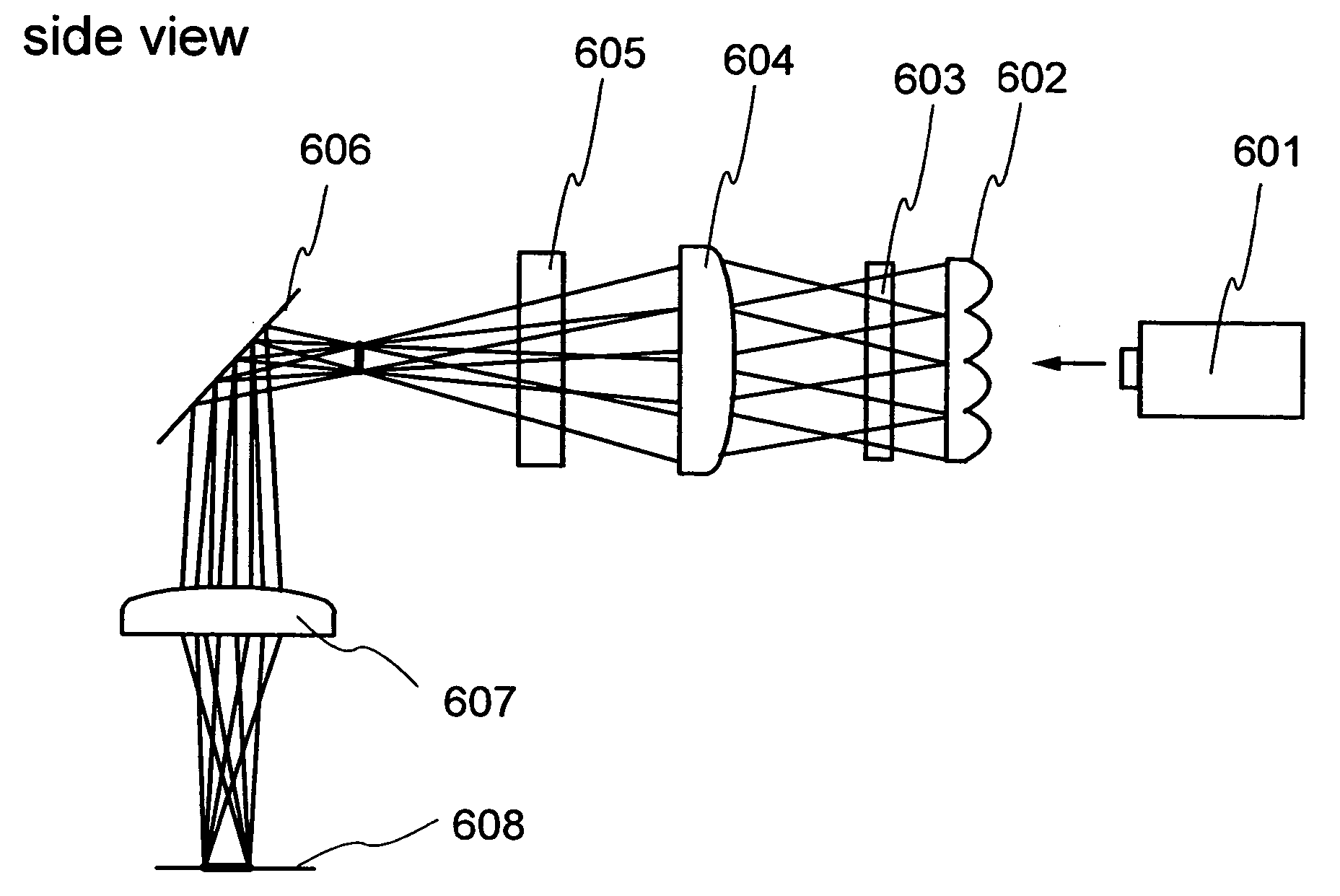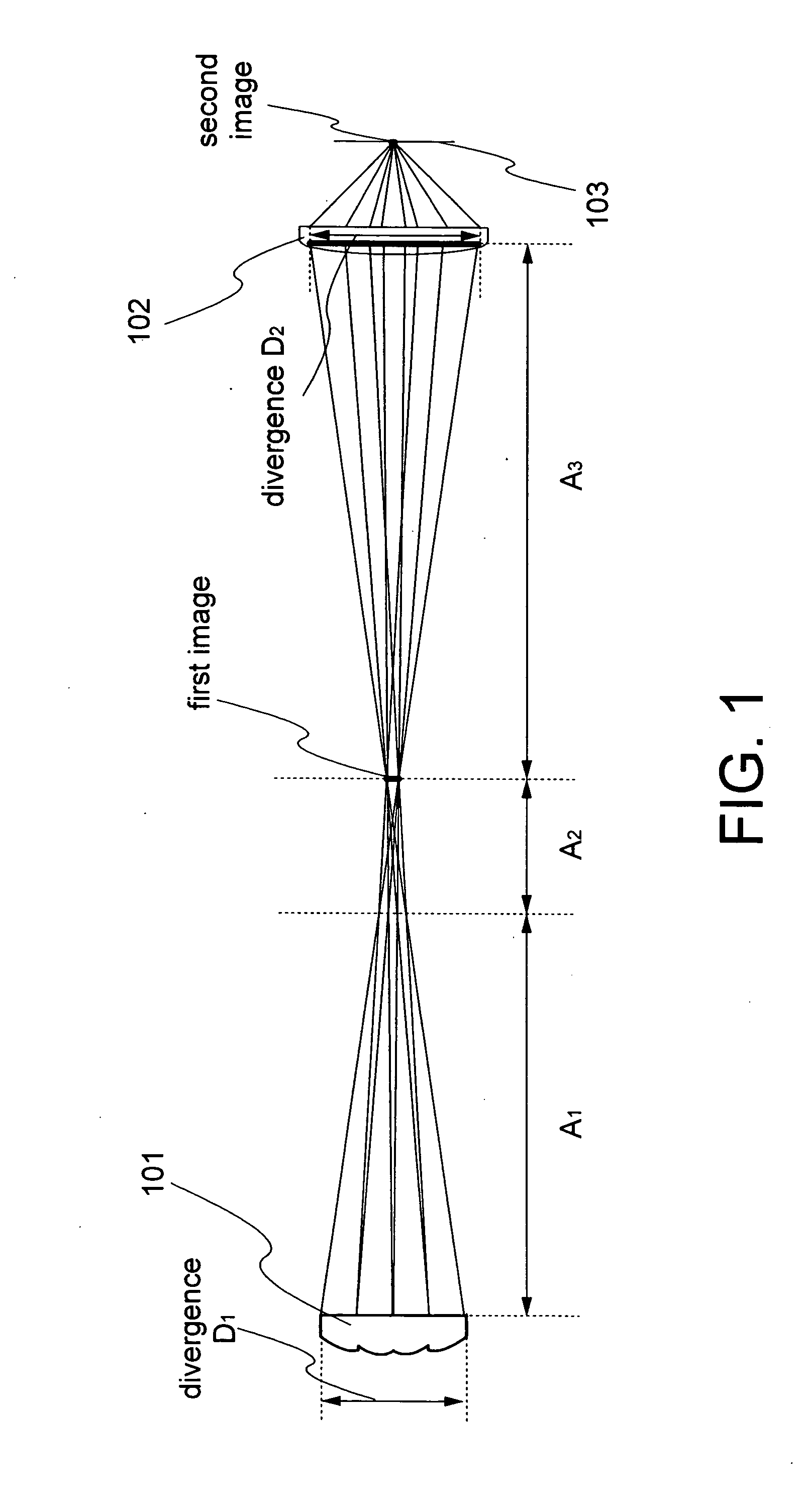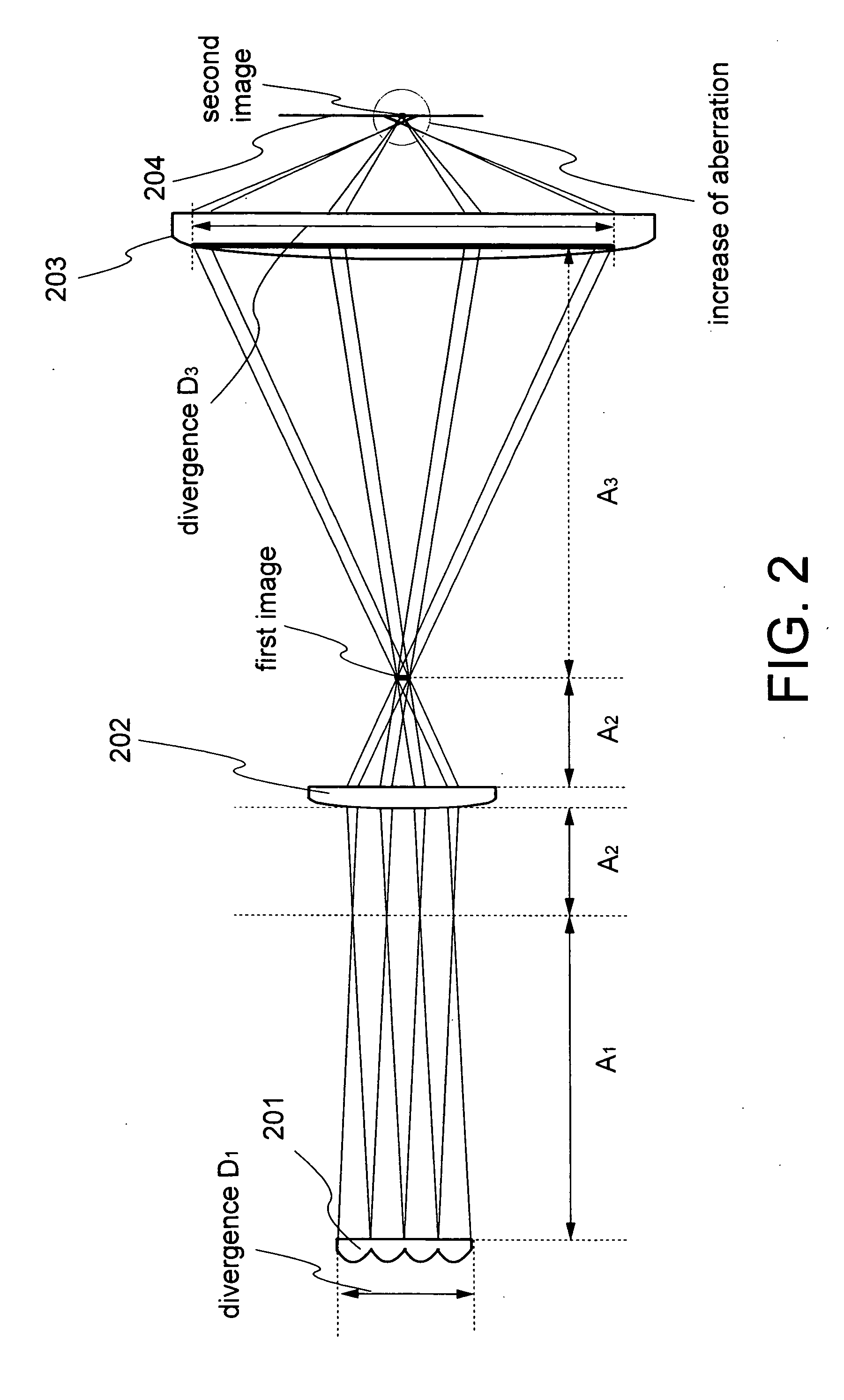Laser irradiation apparatus and method for manufacturing semiconductor device
- Summary
- Abstract
- Description
- Claims
- Application Information
AI Technical Summary
Benefits of technology
Problems solved by technology
Method used
Image
Examples
embodiment 1
[0048] [Embodiment 1]
[0049] This embodiment explains in detail a condition of the optical system described in the embodiment mode of the present invention. Moreover, the present embodiment explains a laser irradiation apparatus using the optical system with reference to FIGS. 3A and 3B.
[0050] In a side view of FIG. 3A, an example is explained in which the intensity distribution of a linear beam formed on an irradiated surface 305 is homogenized in a direction of a short side of the linear beam using an off-axis cylindrical lens array and a cylindrical lens. Moreover, in a top view of FIG. 3B, an example is explained in which the intensity distribution of the linear beam is homogenized in a direction of its long side using another off-axis cylindrical lens array. An excimer laser is used as the laser oscillator 301. A laser beam emitted from the laser oscillator 301 propagates in a direction indicated by an arrow and is irradiated to the irradiated surface 305 after transmitting thr...
embodiment 2
[0054] [Embodiment 2]
[0055] The present embodiment explains an example of the laser irradiation apparatus of the present invention using a light pipe with reference to FIG. 4.
[0056] In FIG. 4, a laser oscillator 401 is an excimer laser. Reference numerals 402 and 403 denote off-axis cylindrical lens arrays. A light pipe 404 has a pair of reflection planes provided oppositely, which is set so as to act on a direction of a short side of a linear beam spot formed on an irradiated surface 406. The space between the pair of reflection planes is 2 mm. In FIG. 4A, the direction of the short side of the linear beam spot formed on the irradiated surface 406 is parallel to the paper. The space between the pair of reflection planes of the light pipe 404 is filled with the air. The laser beam incident into the light pipe 404 is reflected inside the light pipe 404 repeatedly and the divided laser beams are superposed on the same plane. Thus, the intensity distribution of the laser beam is homog...
embodiment 3
[0062] [Embodiment 3]
[0063] The present embodiment explains an example of a laser irradiation apparatus using the off-axis cylindrical lens array of the present invention in combination with the conventional cylindrical lens array with reference to FIGS. 5A and 5B.
[0064] In a side view of FIG. 5A, a laser beam emitted from a laser oscillator 501 propagates in a direction indicated by an arrow. An off-axis cylindrical lens array 502 divides the laser beam into four, and the divided beams are superposed on a predetermined plane so that an image having homogeneous intensity distribution is formed on the predetermined plane. A cylindrical lens 505 positioned behind the image transfers the image to an irradiated surface 506. In FIG. 5A, a direction of a short side of the linear beam formed on the irradiated surface 506 is parallel to the paper. When the off-axis cylindrical lens array 502 is set so that it has curvature in the direction of the short side, the following advantage can be ...
PUM
 Login to View More
Login to View More Abstract
Description
Claims
Application Information
 Login to View More
Login to View More - R&D
- Intellectual Property
- Life Sciences
- Materials
- Tech Scout
- Unparalleled Data Quality
- Higher Quality Content
- 60% Fewer Hallucinations
Browse by: Latest US Patents, China's latest patents, Technical Efficacy Thesaurus, Application Domain, Technology Topic, Popular Technical Reports.
© 2025 PatSnap. All rights reserved.Legal|Privacy policy|Modern Slavery Act Transparency Statement|Sitemap|About US| Contact US: help@patsnap.com



